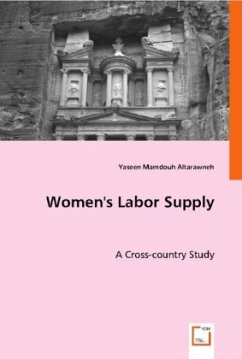The world has witnessed large variations in women?s labor market participation, and the issue continues to puzzle academic scholars and government policy makers alike. Some countries such as Greece, Spain, Egypt, and Jordan have experienced a substantial progress in women?s education, yet still have very low rates in women?s labor market participation. The motivation of this work is an attempt to conduct a comprehensive study -covers 45 countries from low, middle, and high income levels- at the aggregate level so that all possible causes of deviations in women?s participation rates can be systematically analyzed. Also, to explain the gender-gap in economic activity by introducing socioeconomic, demographic, cultural and political differences among countries as explanatory variables. The main question raised in this work is whether cross-country variations in female labor force participation rates are attributable to cross-country differences in general socioeconomic, demographic,and cultural indicators. This work is recommended for people, associations and organizations engaged in enabling and empowering woman for more economic, social, and political involvement in the societies.
Bitte wählen Sie Ihr Anliegen aus.
Rechnungen
Retourenschein anfordern
Bestellstatus
Storno








